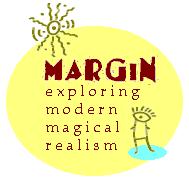

r e t r o s p e c t i v e
MASSIMO BONTEMPELLI

Roots of Magical Realism… in Italy?
STUDENTS OF magical realism generally learn from Day One's lecture that the term magic realism was coined in 1925 by German art critic Franz Roh, who first mentioned it in his book, Nach Expressionismus: Magischer Realismus: Probleme der neusten europaischen Malerei (After Expressionism: Magic realism: Problems of the newest European painting). Then, in 1927, the text from Roh's book made its way into Spanish and appeared in the well-known Revista de Occidente, a journal published by Ortega y Gasset. From there, word spread and magic realism became a part of the trendy vocabulary of artists across the continent and beyond.Eventually, the term magic realism lost its shine among European art critics. Certain intellectuals, however, continued to advocate the notion of magic realism in art and literature, including Italian writer, critic and journalist Massimo Bontempelli. Bontempelli, who founded the Italian journal 900 at around the same time, clung to the idea that the wonders of the world could be found hidden within the mundane elements of the everyday. His theories on realismo magico were derived from Futurism, a literary movement he would develop after World War I.
In 1930, Bontempelli published Due storie di madri e figli (Separations: Two Novels of Mothers and Children), two linked novels which brought him acclaim and which employed obvious magical realist elements. In the first book, The Boy With Two Mothers, Bontempelli gives us the story of a twice-born boy. The second book, The Life and Death of Adria and Her Children, is the baroque fairy tale of a woman who is so beautiful she is literally untouchable. Both novels were set within the chaotic sociopolitical landscape of Europe and worked toward an end that only Bontempelli could have imagined—that dreams could be reality and reality, dreams. In other words, he wished to create fantasia so realistically as to assign it the same realism as the natural world.
The author's career took a tumultuous turn (as it seems most magical realist authors' careers do) when he defied the Fascist regime of the time by refusing to take a job previously held, but lost, by a Jewish academic in 1938. Just as it has been for so many others, the increasing internal pressure, political censorship and threats on his life led him to exile.
Now, Bontempelli is considered a genius among the 20th-century Italian literati. His writings have been translated into many languages. Luckily for the English-speaking world, translator Estelle Gilson produced a quality rendition of Separations in 2000, some four decades after the author passed away, offering fans of magical realism an opportunity to broaden their horizons. Who knew there was an Italian connection in the magical realist linkage? Thanks to Bontempelli, the world can now count the degrees of separation between Latin America's lo real maravilloso and Europe's magischer realismus and, later, Bontempelli's realismo magico, with little argument.
Well, maybe not. Some contemporary critics now believe Bontempelli to be the rightful originator of the magical realist narrative, and not the Latin American forefathers who popularized it later. No doubt this will be a point of contention for scholars to debate over the next century.

margin home | contents | links | reading list | marginalia | contributors | staff | guidelines | kudos | subscriptions | contact us
Layout, design & revisions ©Tamara Kaye
Sellman, Webmaster
Active home URL:
http://www.magical-realism.com
(also:
https://www.angelfire.com/wa2/margin/index.
html)
TERMS OF USE: This site contains copyrighted materials, including but not limited to text and graphics. You may not use, copy, publish, upload, download, post to a bulletin board, include in any weblog or otherwise transmit, distribute or modify any elements of this site in any way, except that you may download one copy of such contents on any single computer for your own personal, non-commercial use, provided you do not alter or remove any copyright, author attribution or other proprietary notices.